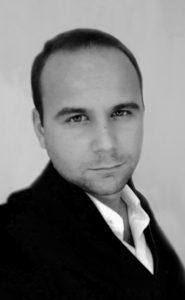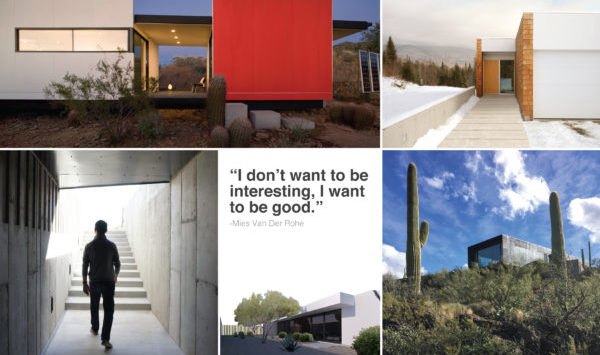The American Institute of Architecture Students (AIAS) is celebrating the 60th anniversary of student excellence in leadership, service, and design. In honor of our 60th year, the AIAS is excited to share 60th: Legacy, an ongoing weekly celebration of and thanks to our alumni sponsored by Professional Publications, Inc (PPI). PPI is a publisher of professional licensing exam materials since 1975 and wants to recognize those who have helped the AIAS achieve 60 years of success.

Name
Nick Mancusi, Assoc. AIA
Organization
Mancusi Design, LLC | Mancusi Builders, LLC
Title
Founder/Partner
Connect
Twitter | Instagram | LinkedIn | Website
Bio
Nick Mancusi is the founder/partner of Mancusi Design, LLC, a multi-disciplinary design studio based out of Scottsdale, Arizona that focuses on modernist residential architecture, graphic design, and brand development. Nick is also partner of Mancusi Builders, LLC based in Hampstead, New Hampshire, a construction company that focuses on a variety of residential projects throughout the New England area. Originally from New Hampshire, at the age of 10 Nick started his own small drafting business. He then worked for SFC Engineering Partnership, Inc designing several wireless sites throughout New England, gaining experience in civil, fire protection, septic design, surveying, and structural engineering. After graduating from Pinkerton Academy as a member of the National Vocational Technical Honor Society, he attended two years of study at Wentworth Institute of Technology before transferring to Taliesin, the Frank Lloyd Wright School of Architecture where he completed his BAs and M.Arch degrees. At Taliesin, Nick was one of the founding members of AIAS Taliesin, eventually becoming its third President. Also at Taliesin, Nick had the opportunity to collaborate on several projects including the international award wining Taliesin Mod.Fab with Paolo Soleri on the Cordes Junction Bridges. Later Nick went on to become the 2010/11 AIAS West Quadrant Director and then was elected the 2011/12 AIAS National President and Chairman where he introduced the Advocacy Task Force–what has since become the National Design Services Act. Following his time on the AIAS and AIA National Boards, Nick had been a part of the NCARB Licensure Task Force, NAAB 2013 Accreditation Review Conference, and recently finished up his term as the AIA Phoenix Metro Associate Director and his tenure on the AIA Phoenix Advisory Council. Currently Nick is engaged in several projects throughout the country while also starting Mancusi Development with his first multi-family project to be completed this year. Nick lives in Scottsdale with his wife Ada Rose (whom he met through AIAS and Taliesin) and his dog Duke.
ARE Prep Tip: What is one piece of advice that you would give to those starting to test?
At the time of this interview, I have passed 6 exams and scheduled to take my final ARE next month, so hopefully by the time this is published I will be holding that little rubber stamp. The only tip I can give to anyone going through or starting on their pathway to licensure is simply “Just Do It”. Yes, AXP is a lot of hours, but if you put your nose to the grinding wheel, if you log those hours each week with the AXP app, you’ll be done by the time you’ve learned a thing or two from working in the field. When it comes to the exams, just pull up your pants and sign up. If your firm doesn’t pay for your exams seek out your local AIA component for grants. I took my time in signing up for my exams and wish I hadn’t because I’d be done by now. Even though I’ve always been a terrible test taker, I am working my way through the ARE with success. I have confidence if you study and rely on the skills you’ve obtained through school and practice, you’ll pass and have the ARE licked in no time.

How did your experience with AIAS help you to achieve your goals?
AIAS taught me something I never knew about myself–that I could be more than an average student. It taught me that I could make a difference in the world, in my peers’ trajectories, and that I could do things beyond what I had learned between the four walls of studio if I applied myself. When I was elected into each position I held with AIAS, I took on more responsibilities, gave more of my free time, and took on roles that held importance to more than my own goals. These experiences gave me the confidence to know I can do anything I set my mind to, learn anything I dare to challenge myself with, and stretch myself further than I ever have before. It has given me the ability to start my own design practice, engage and collaborate with leaders of the built environment, while providing the ambition to take on more challenging and exciting work–reaching beyond my comfort zone and taking the risks that have helped define my life and career.
What and/or who shaped you into who you are and what you do today?
I’m the son of a builder who from a very young age taught me about the craft of building. My parents have always been a major force in shaping my worldview, directing and encouraging me along my journey to becoming an architect. I’ve also been fortunate enough to have a powerful and valuable mentor, Michael P. Johnson, who is one of the greatest architects I’ve ever known and who has always challenged me to become a better designer. Mentors– whether family or dear friends, a spouse or partner, a community of people whom you aspire to–are one of the most critical components in shaping not only your talents and techniques but always critically challenging you to be the best person one can be. Getting engaged with the AIAS, with your peers, traveling, exposing yourself to people whom you aspire to, will always shape who you are.
How can someone best change the world?
To change the world, one must always be ready to step-up with passion and conviction and commit to the long thankless fight for things that are greater than any one individual in any one lifetime. Changing the world never happens overnight and is never awarded with praise. It is not achieved by accepting what is, but always by working towards what could be, by taking the road less traveled, by being unafraid of failing, and pouring your heart and soul into everything you do. The late great Brazilian architect Oscar Niemeyer once stated, “Architecture will always express the technical and social progress of the country in which it is carried out. If we wish to give it the human content that it lacks, we must participate in the political struggle.” I have always looked at that quote as a message to dare to put as much passion I have had for architecture into the world and people architecture serves. To change the world, one must always be ready to engage, to take part in the struggles of politics, religion, economics, art, and culture for the greater good of society. The world is not changed by onlookers and Facebook posts, it is changed by people who look at the world around them and realize, as Steve Jobs once said, “the world was created by people no smarter than you…” and by stepping out, by participating with real action, whether through AIAS, your right to vote, your architecture, or your community, you can be a part of the change that impacts the world.
How can someone be a better designer?
The best advice I can provide to anyone about being a better designer comes from two quotes by two iconic architects. The first is by Mies, “I don’t want to be interesting, I want to be good.” In school, we are challenged to be interesting, to invent and evolve our creative capacities so that we begin to look at the world differently. However, school is limited in its time and we assume that great architecture comes from the most inventive idea rather than the refinement of our philosophy and technical craft. Studying in a place like Taliesin, I learned that architecture is not simply about theoretical possibilities, but also encompasses tangible realities and philosophical convictions informed by the constant practice of the mind and craft of architecture. Be informed, read as much as you can, challenge yourself to work harder, understand more about how buildings are built, evolve your own philosophy, and refine your craft by never settling for what is purely interesting, rather by what is genuinely good. Which leads me to the second quote by Murcutt, “Start your career where you want to end your career.” Being a good and respectable designer is about not selling out, ever. I have in my short journey thus far, walked away from more projects than I have designed and have never regretted it. There have been many times where I have struggled to pay bills, dry spells without work, however, I refuse to do trash for cash, deny my ethics, my philosophy, my craft, or taint the legacy I hope my work will create. Be honest with yourself, your work, and create the best architecture you can for the world and society you are a part of and respect. Don’t worry about money, it will come with good, honest design.
How do you define work-life balance and how is it achievable?
I have a great work/life balance because to me, architecture is life. Every one of my friends, my family, my activities, my passions touch architecture in some form or another. When I travel, I travel for art, architecture, and culture. When I call my father, we talk about our next building project together. When my wife and I have dinner, we talk about our development and the spaces we enjoy. When I hang out with my friends, we go to galleries, chat about architectural philosophy, and sneak onto private property to scope great buildings. Wherever I am, I buy books on art and architecture and look at everything questioning its aesthetic and design philosophy. Politics always ties into architecture and architecture always ties into my world view. Don’t get me wrong, running my own design practice, writing contracts, getting drawings through the city, and doing the books can have its challenges, but those are a small part of the greater whole. You should always commit your life to what you love and then it will never feel like work. As Frank Lloyd Wright said, “The heart is the chief feature of a functioning mind.” So follow your heart and do what you love–that is where you find balance.
If you, or another AIAS alumni you know, deserves recognition for their contribution to the profession and society at large, please use the link below to nominate them for this honor.











